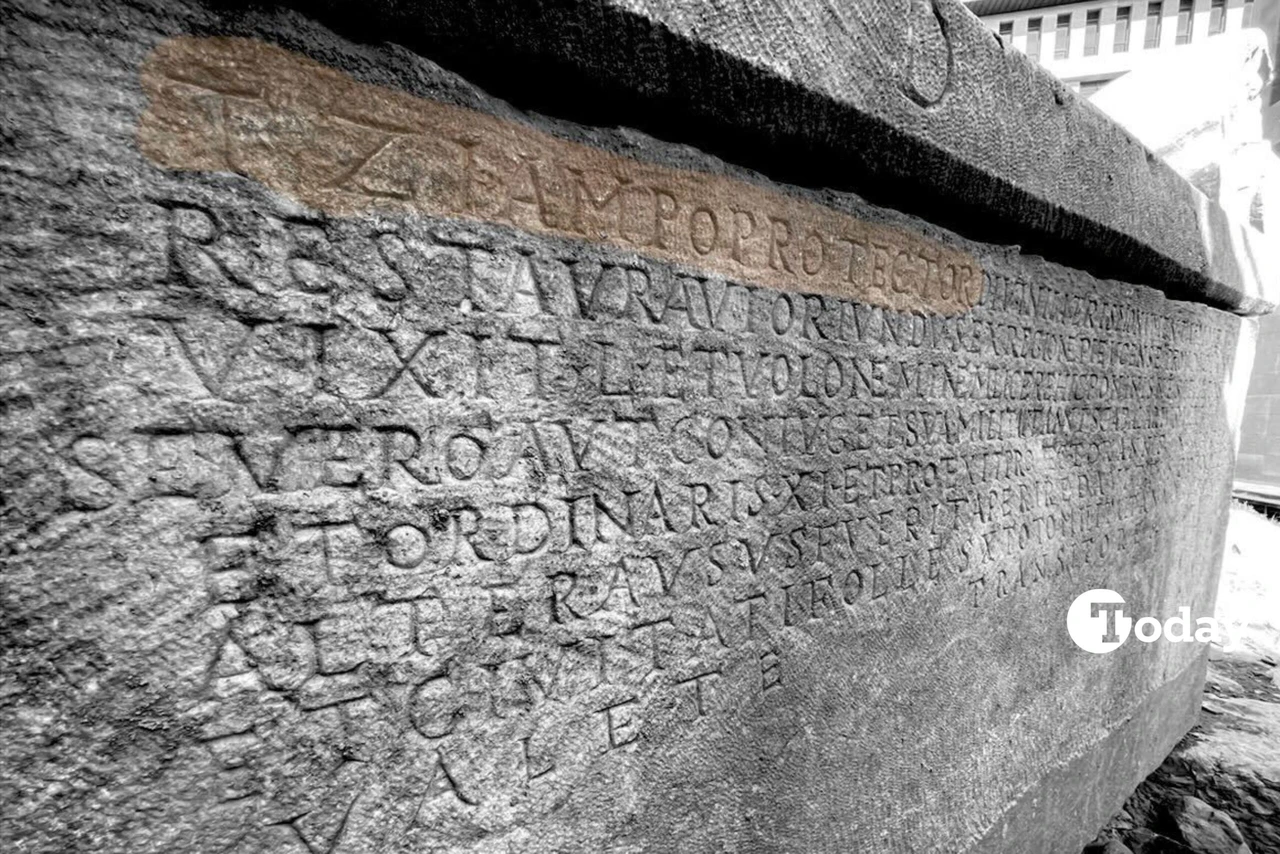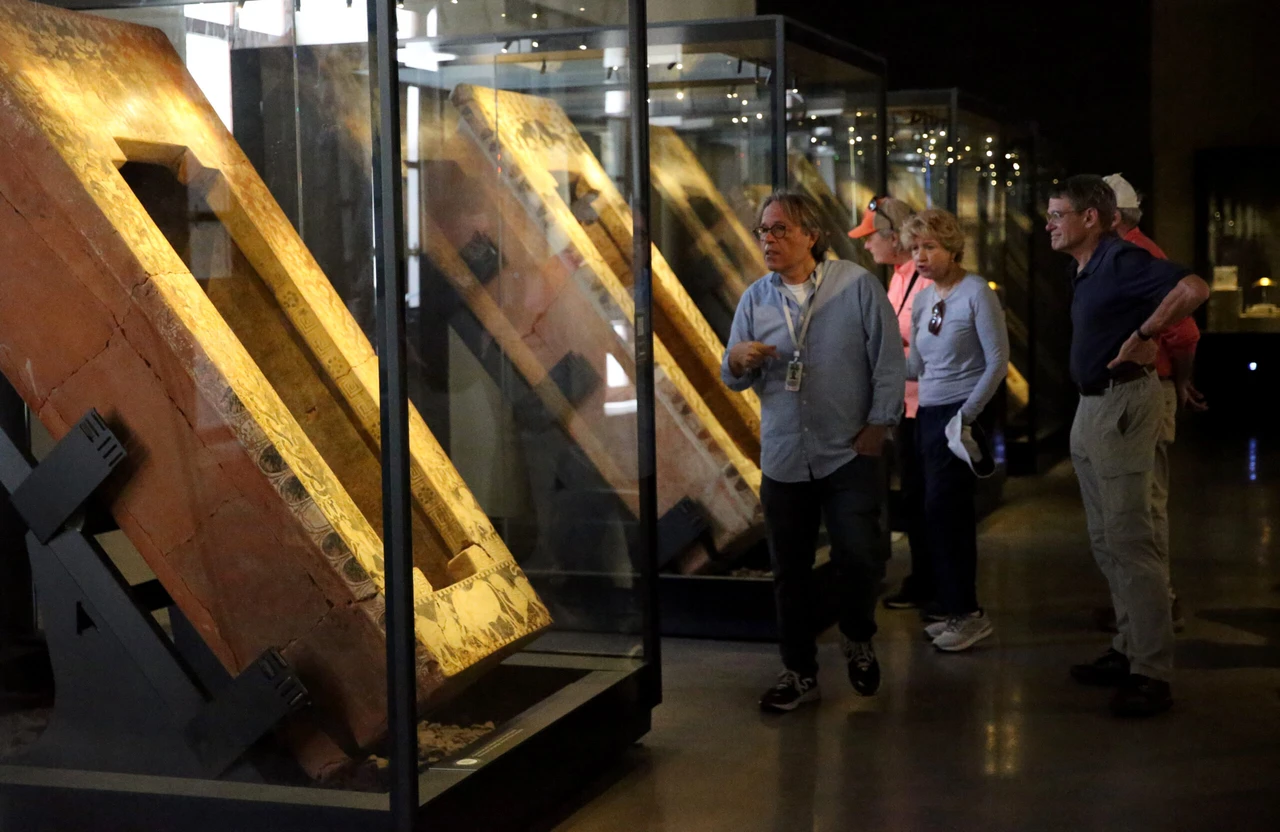Pamukkale’s mythological significance: Cult of Anatolian goddess Kybele
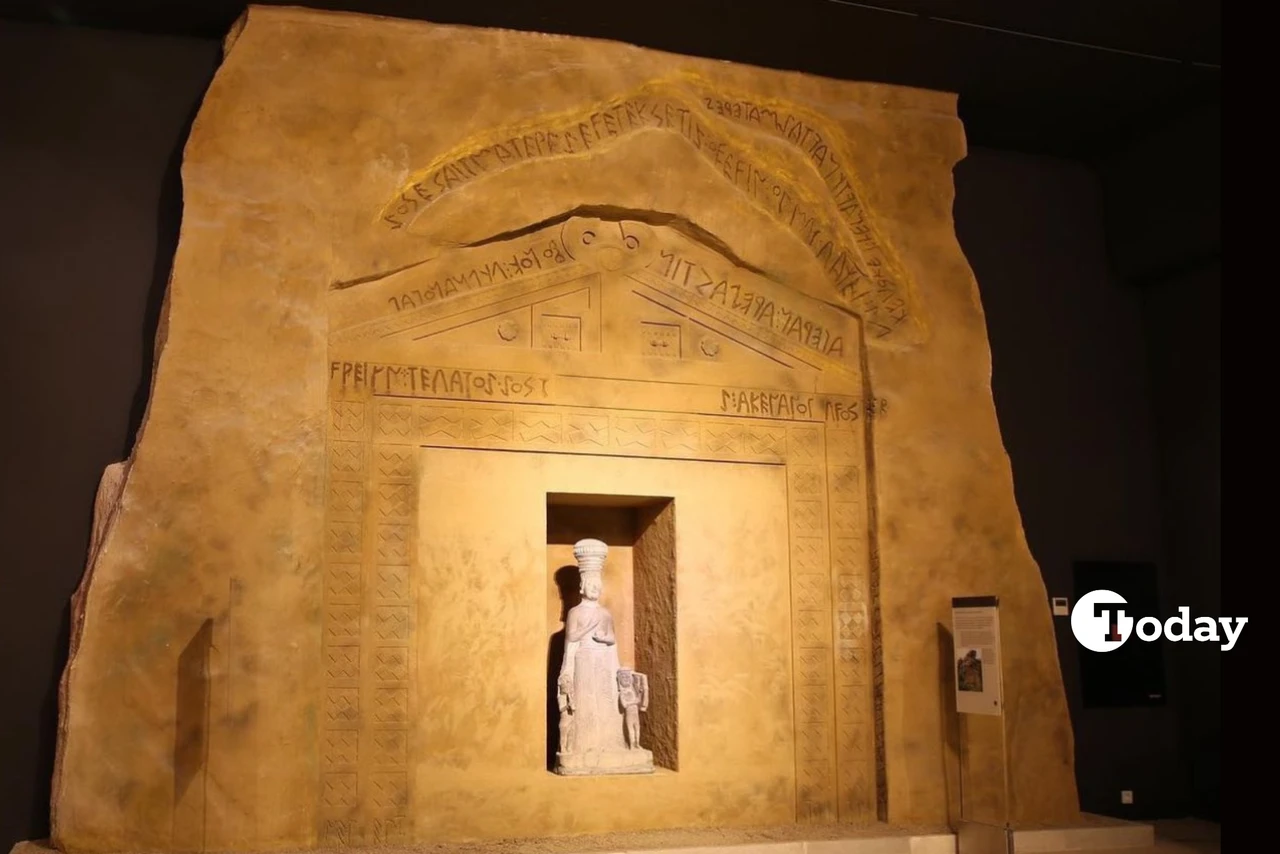 A reconstructed Kybele temple from Phyrgian times with inscriptions and a statue of Kybele, displayed in the Ankara Museum of Anatolian Civilizations, Türkiye. (Created with Canva)
A reconstructed Kybele temple from Phyrgian times with inscriptions and a statue of Kybele, displayed in the Ankara Museum of Anatolian Civilizations, Türkiye. (Created with Canva)
Pamukkale, a UNESCO World Heritage Site located in Türkiye’s Denizli province, attracts numerous tourists each year who marvel at the site’s natural beauty and historical significance, as it has been the meeting point of many ancient civilizations.
While Western narratives often emphasize its Greek and Christian associations, the site’s profound roots in Anatolian mythology, especially the veneration of the Anatolian goddess Kybele, reveal a much older and deeply spiritual legacy.
These origins shaped the cultural and religious identity of the region long before the arrival of the Greeks, embedding Kybele’s essence into the land itself.

Origins of Anatolian goddess Kybele: Linguistic, cultural roots in Phrygia
Pamukkale, meaning “Cotton Castle,” derives its name from its striking white travertine terraces, formed by calcium carbonate deposits from mineral-rich thermal waters.
- With temperatures ranging from 35 degrees Celsius to 100 degrees Celsius (95 degrees Fahrenheit to 212 degrees Fahrenheit), these springs have been revered for their healing properties since antiquity.
In Anatolian mythology, such life-giving waters were sacred, symbolizing fertility and renewal—central themes in the worship of Kybele.
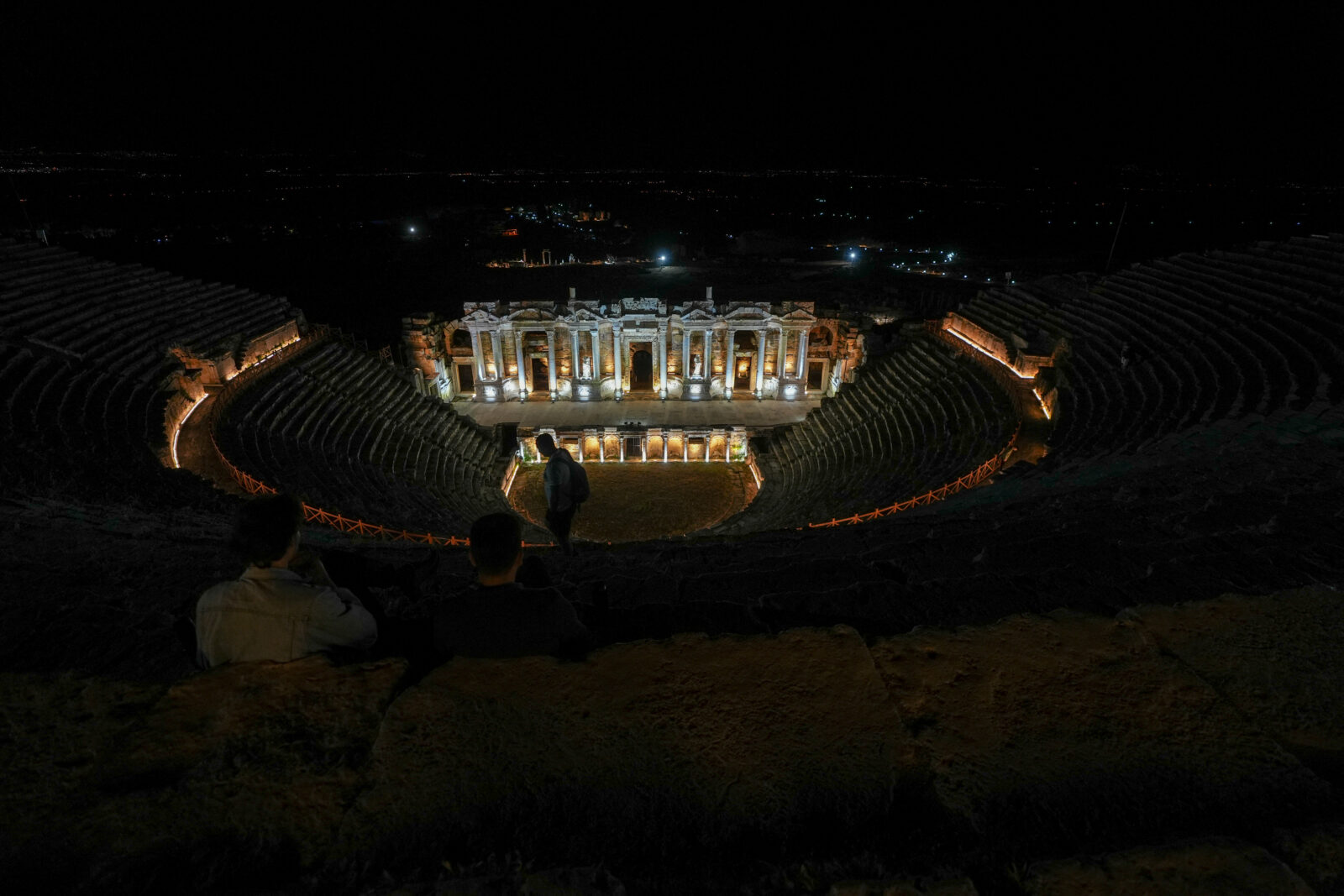
The Phrygians, who established a powerful kingdom in central Anatolia around the 9th century B.C.E., incorporated these natural elements into their religious practices, venerating Kybele as the goddess of nature and abundance.
- Their civilization stretched across modern-day Ankara, Gordion, and western Anatolia, heavily influencing religious practices in the region
- Phrygian culture revolved around agriculture and fertility, which made Kybele—the goddess of nature, mountains, and fertility—a central deity in their pantheon
- In Phrygian religious tradition, Anatolian goddess Kybele was often depicted as a powerful maternal figure, seated on a throne flanked by lions, emphasizing her dominion over nature
- Archaeological discoveries in Gordion, including reliefs and inscriptions, confirm her importance as a protective and life-giving goddess
- Phrygian religious rituals centered on natural sanctuaries such as caves and mountaintops, aligning with the sacred landscape of Pamukkale
Researchers suggest that Kybele’s worship spread from Anatolia to the Mediterranean world, influencing deities such as Artemis in Greece and Diana in Rome.
The goddess was later associated with the Virgin Mary in Ephesus, illustrating how deeply rooted her presence was in Anatolian spirituality.
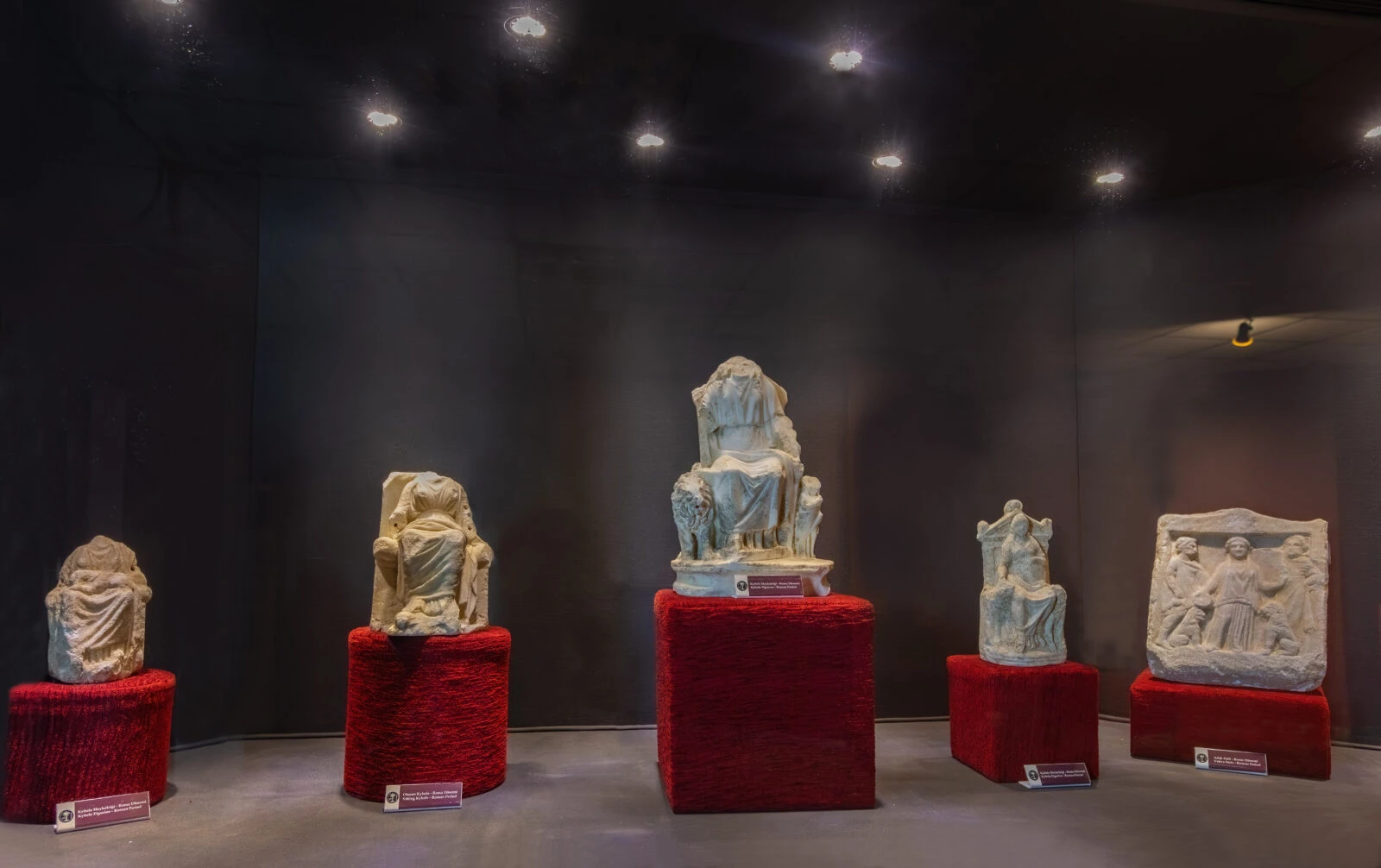
Who is Anatolian goddess Kybele?
Kybele, also known as Magna Mater (Great Mother), was deeply connected to the wilderness, particularly dense forests and mountain regions, where her cult flourished.
One of her most striking characteristics was her association with Attis, a figure who, in devotion to the goddess, performed ritual self-castration and dedicated himself to her service.
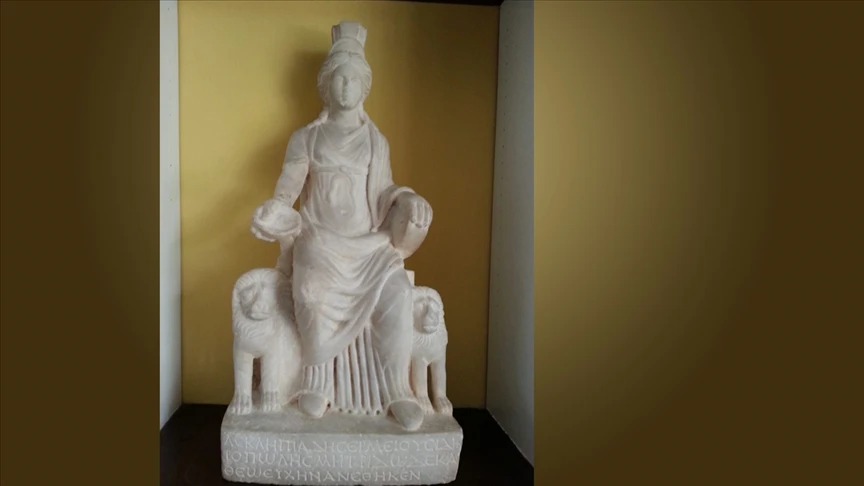
This practice extended to Kybele’s priesthood, known as the Gallus, who were also ritually castrated as part of their sacred role. The goddess was often depicted with lions, reinforcing her dominion over wild animals, and her worship incorporated music, including cymbals, drums, and flutes, which were believed to induce divine ecstasy.
At Pamukkale, Anatolian goddess Kybele’s association with nature’s regenerative power was celebrated through rituals honoring the thermal springs and the abundant flora.
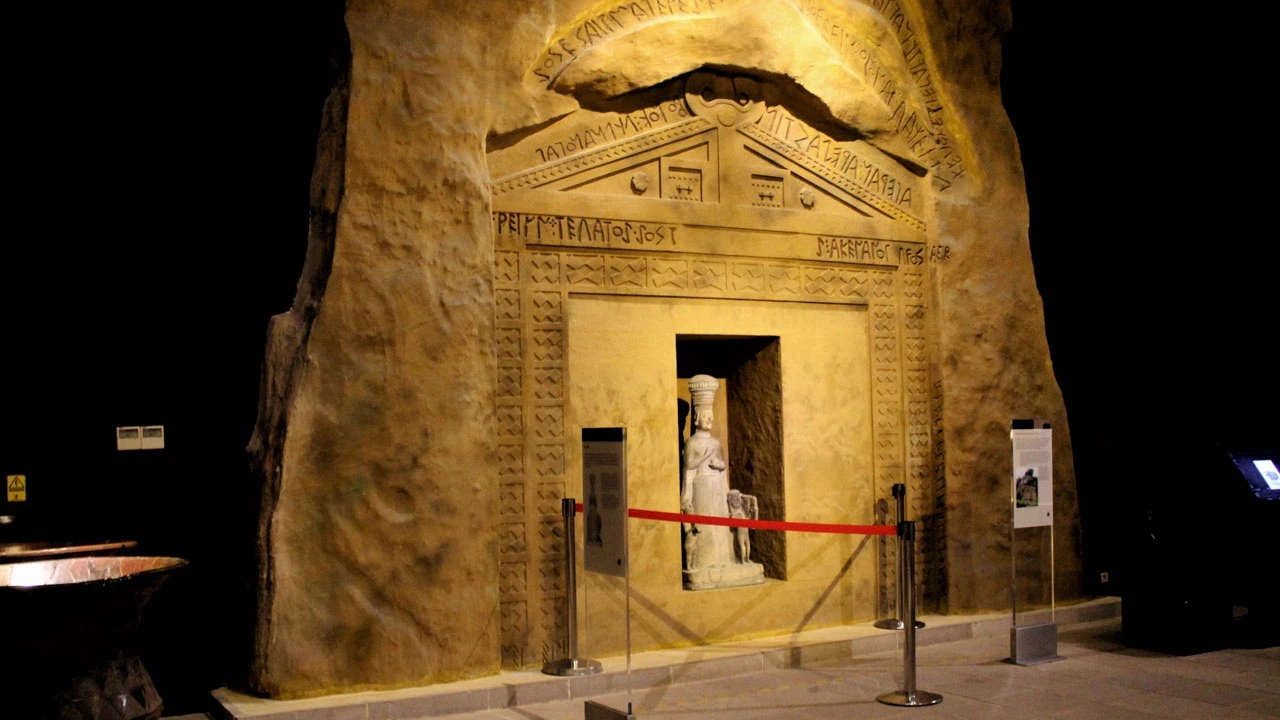
Key archaeological findings at Pamukkale’s Hierapolis
The ancient city of Hierapolis, perched atop Pamukkale’s terraces, was founded in the second century B.C.E. during the Hellenistic period. Under Roman rule, it flourished as a cultural and spiritual hub, featuring numerous significant structures:
- Theater: A well-preserved structure adorned with intricate carvings, blending Anatolian, Greek, and Roman artistic elements.
- Temple of Apollo: Constructed near a sacred site associated with Anatolian deities, this temple reflects the fusion of local and classical religious practices.
- Necropolis: One of Anatolia’s largest ancient cemeteries, reflecting Hierapolis’ importance as a pilgrimage and healing center.
- The Plutonium: A mysterious cave emitting toxic gases, regarded as a gateway to the underworld. Rituals here involved priests demonstrating immunity to the fumes, likely linked to the Anatolian goddess’ chthonic aspects.
Reliefs and inscriptions found near Hierapolis depict Kybele in her traditional Anatolian form, often flanked by lions. Some fragments suggest ritual scenes involving Attis and the Gallus priests, emphasizing her chthonic and fertility-related aspects.
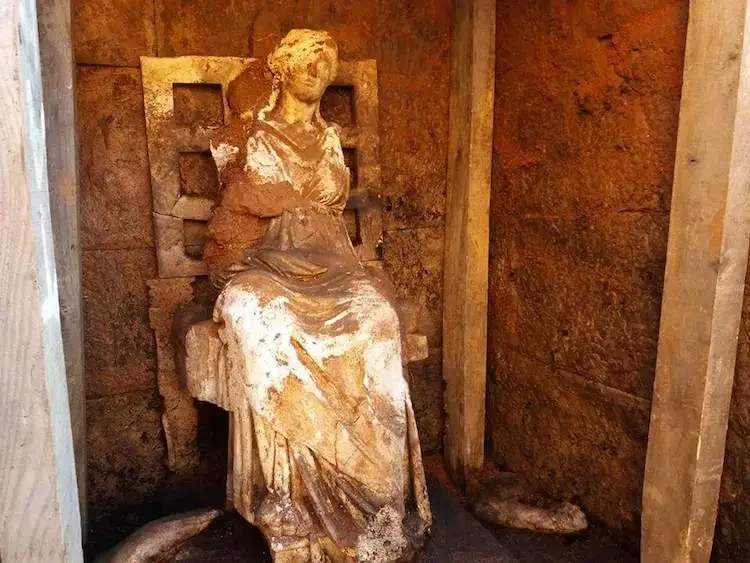
Recent archaeological discoveries
Excavations conducted in the 21st century have revealed critical insights into Anatolian goddess Kybele’s significance at Hierapolis:
- Stepped altar above Plutonium: This altar, attributed to the Phrygian cult of Kybele, demonstrates her worship’s prominence in Hierapolis before Greek influence.
- Carvings and inscriptions: Found near the Plutonium and other sacred locations, these artifacts depict Kybele and include dedications to her, emphasizing her central role in spiritual practices.
- Offerings near Plutonium: Pottery fragments and animal remains suggest fertility rituals tied to Kybele’s chthonic aspects.
- Artifacts in the Hierapolis Museum: The museum houses kourotrophoi figurines and ritualistic pottery, illustrating Kybele’s nurturing and life-giving roles.
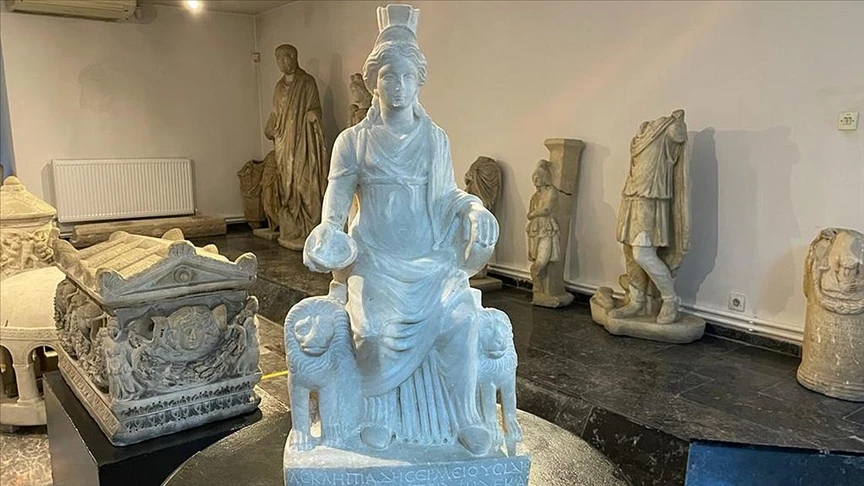
Mythology intertwined with Pamukkale’s landscape
Pamukkale’s unique natural features have long been associated with divine forces. In Anatolian mythology, the flowing thermal waters symbolized Anatolian goddess Kybele’s life-giving essence, while the Plutonium likely embodied her connection to the mysteries of life and death.
As Greek and Roman cultures integrated into the region, they reinterpreted the site’s spiritual significance. For instance:
- Hades (Pluto) was linked to the underworld aspects of the Plutonium.
- Apollo’s temple connected the site to healing and prophecy.
Despite these reinterpretations, Kybele’s essence persisted, blending Anatolian and classical beliefs into a unique cultural identity.
Scholars argue that Kybele’s imagery influenced later deities, such as Artemis in Greek mythology and Diana in Roman tradition. Some even suggest that her worship evolved into that of the Virgin Mary in Ephesus, reflecting how deeply rooted her presence was in Anatolia.
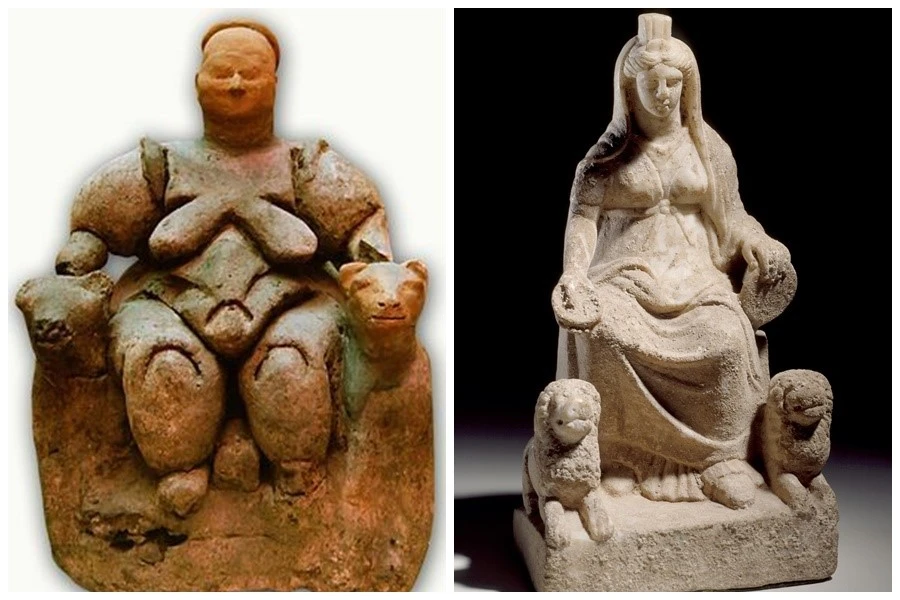
How mother goddess Kybele’s healing traditions shaped Pamukkale’s history
Anatolian goddess Kybele’s association with fertility and healing made her a central figure in Pamukkale’s spiritual practices. Although these healing powers were later attributed to Greek and Roman gods who have been widely studied and researched in the West, belief in the Anatolian goddess Kybele seems to have set the foundation stones.
Pilgrims from across Anatolia visited the thermal springs, believing in their curative powers.
Ancient times:
- During pre-Greek and Greek times, Pamukkale (and Hierapolis) was already considered a sacred site because of its thermal springs and their healing properties. Archaeological evidence suggests pilgrims visited to perform rituals dedicated to Anatolian deities like Kybele. These rituals emphasized fertility, nature, and chthonic forces, tying the springs to Kybele’s life-giving and regenerative powers.
- Evidence of offerings, such as pottery fragments and animal remains, found near the Plutonium and other sacred sites, confirms pilgrimages during this era. These findings suggest fertility and healing rituals connected to Kybele and other local deities.
Christian times:
- With the spread of Christianity, Hierapolis became a major pilgrimage center, particularly after Saint Philip, one of Jesus’ apostles, was martyred there. His martyrdom transformed Hierapolis into a sacred Christian site, attracting pilgrims seeking spiritual and physical healing.
- While Kybele’s public worship declined, some scholars suggest that elements of her cult persisted in underground practices, blending with local beliefs before fading completely.
These ancient traditions laid the foundation for Hierapolis’s prominence as a center of healing.
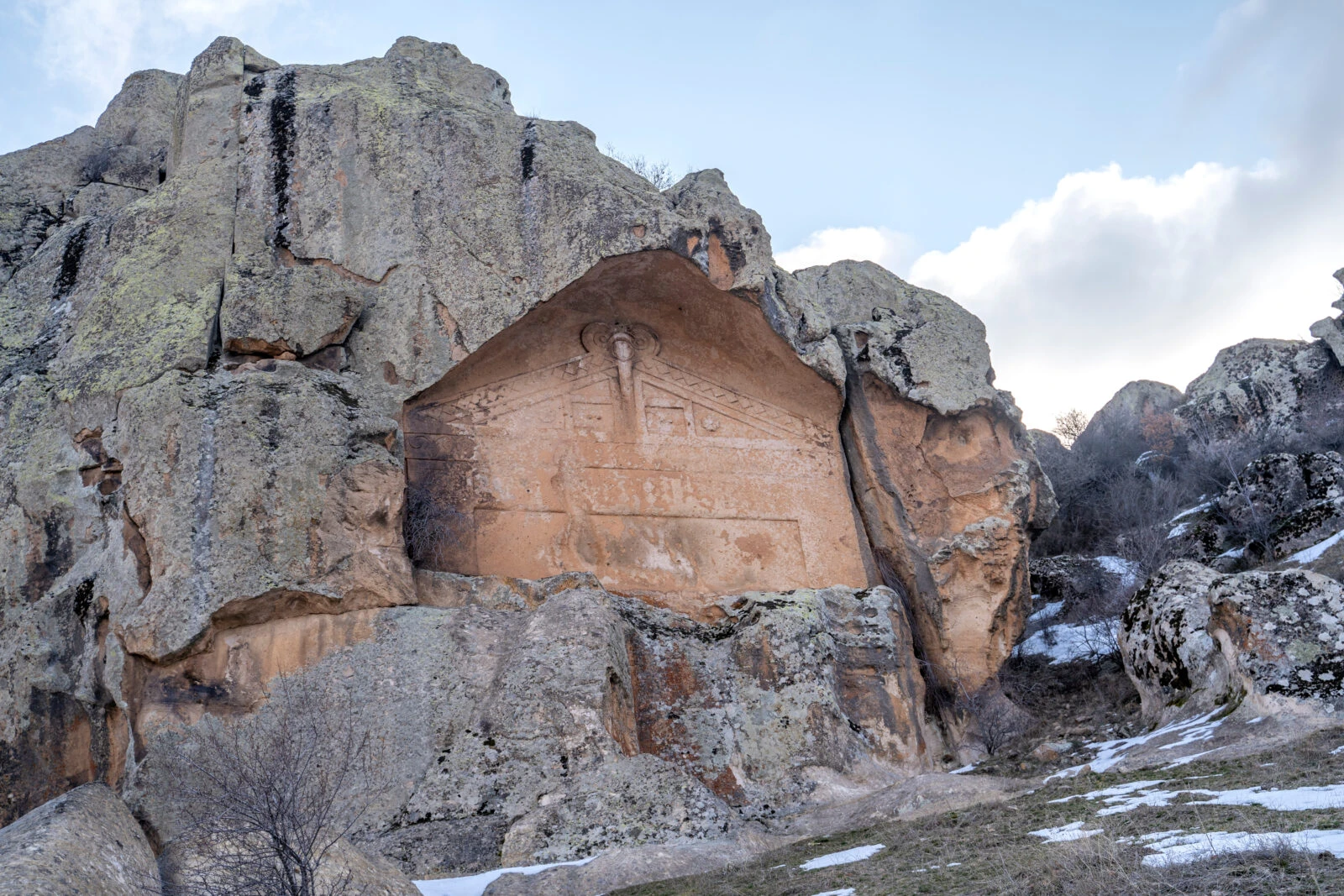
Where to find Anatolian goddess Kybele’s influence
To better appreciate Kybele’s legacy and Pamukkale’s spiritual history, visitors can explore specific landmarks and artifacts:
- The Plutonium: This cave, emitting toxic gases, was considered a sacred site and a gateway to the underworld. A stepped altar dedicated to Kybele, uncovered here, documents the Anatolian goddess’ chthonic significance.
- Carvings and inscriptions near sacred sites: Depictions of Anatolian goddess Kybele and inscriptions dedicated to her were discovered near the Plutonium and surrounding areas, emphasizing her enduring spiritual importance.
- Artifacts in the Hierapolis Museum: Located in a former Roman bathhouse, the museum displays kourotrophoi figurines, ritualistic pottery, and other items linked to Kybele, offering tangible connections to her worship.
While the Temple of Apollo itself is primarily associated with Greco-Roman traditions, its proximity to Anatolian sacred sites reflects a blending of spiritual elements.
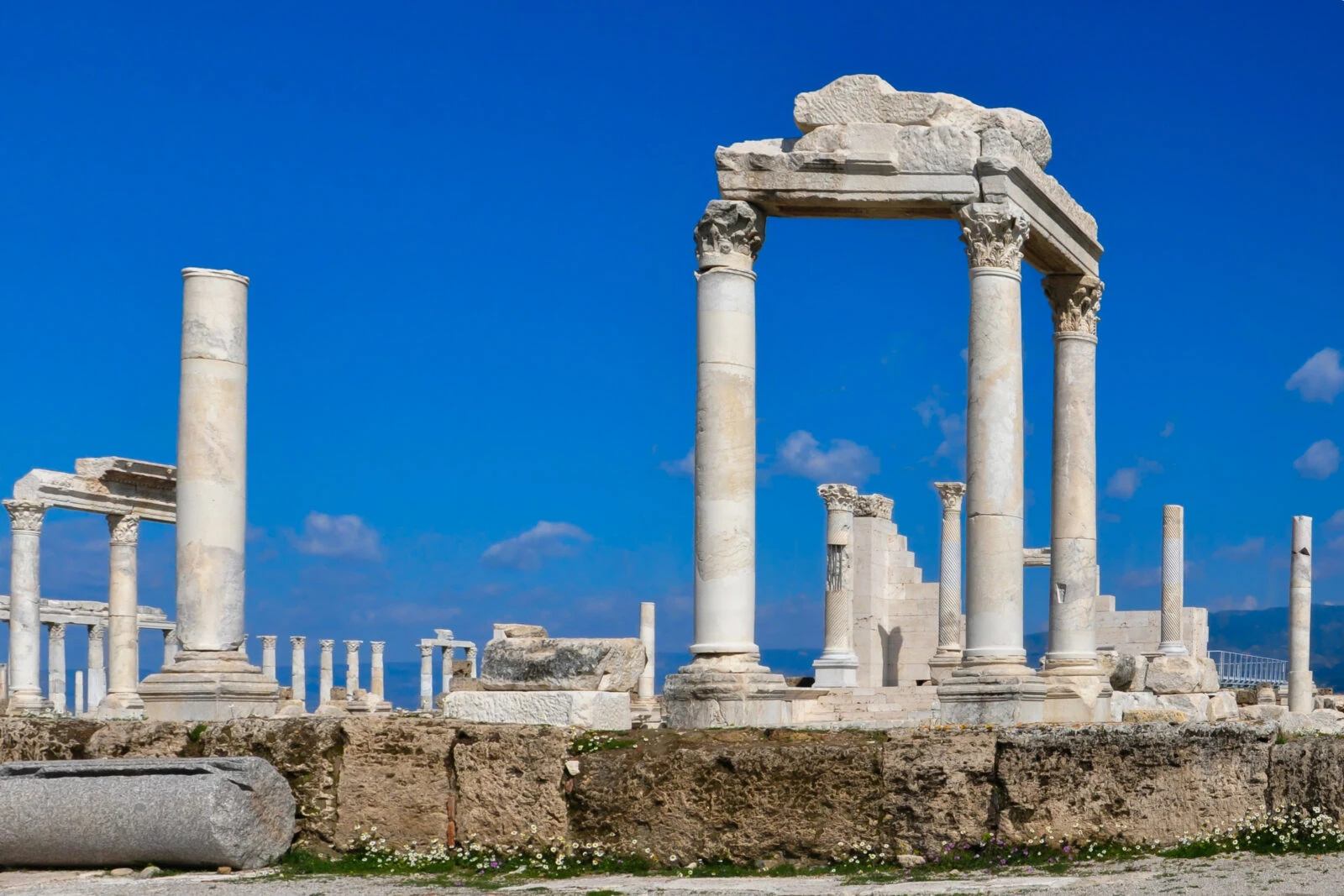
How to make your visit to Pamukkale more special
To fully immerse in Pamukkale’s rich heritage, visitors should consider:
- Walking along the travertines: Experiencing the thermal waters firsthand while enjoying panoramic views
- Joining guided tours: Professional guides can provide in-depth explanations of Hierapolis’s ruins and their connections to Anatolian mythology
- Exploring museum exhibits: View artifacts related to Kybele and learn about her role in shaping the region’s spiritual and cultural identity
While Greek and Christian narratives often dominate discussions of Pamukkale, its deeper Anatolian roots offer invaluable insights into the region’s ancient spirituality. Anatolian goddess Kybele’s enduring presence shows us signs of the sacred relationship between humanity and nature that defined Anatolia for millennia.
